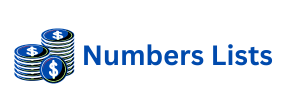Content writing drives online presence. It fuels digital growth. Effective content needs search optimization. This is where Semantic SEO excels. Understanding user intent is key. Semantic SEO focuses on query meaning. Backlinks, external and internal, are vital. They signal authority and relevance. Mastering them boosts visibility.
Semantic SEO improves search understanding. It connects related topics. This creates a rich content ecosystem. Quality backlinks support this goal. They build trust and credibility. Without proper linking, great content struggles. We examine how to leverage them. This guide offers practical implementation. Boost your rankings and audience reach.
Deep Dive into External Backlinks for Semantic SEO
External backlinks come from other websites. They point to your content. Search engines view them as votes of confidence. These signals boost your domain authority. High-quality external links are powerful. They show content’s value and relevance. Earning them needs strategy. Outreach and content promotion are essential. Remarkable content attracts links naturally.
Building a strong backlink profile takes effort. It demands consistent work. Create link-worthy assets. These include comprehensive guides or unique data. Share your content widely. Connect with industry influencers. Offer guest posts on reputable sites. This expands content reach. It increases link-earning chances. Quality always trumps quantity. Strong links beat many weak ones. They improve search rankings. This is a core part of effective digital marketing strategies. Prioritize authoritative sources for impact.
Maximizing Impact with Quality External Backlink Acquisition
Strategic external backlink acquisition is vital. It strengthens Semantic SEO efforts. Guest posting is one effective method. Write valuable articles for relevant blogs. Include a link back. Ensure the host site has good domain authority. Broken link building is another tactic. Find broken links on high-authority websites. Create superior content for the broken resource. Suggest your content as a replacement. This offers a win-win.
Resource page link building is also effective. Many websites curate resource lists. These link to valuable external content. Identify relevant resource pages in your niche. Propose your high-quality content for inclusion. Make a compelling case for its value. Networking helps greatly. Attend events. Build relationships with other creators. These connections lead to natural links. Prioritize genuine value creation. This supports sustainable link building. It cements content authority. Your Semantic SEO benefits.
The Strategic Importance of Internal Backlinks in Content Writing
Internal backlinks connect pages within your website. They are critical for Semantic SEO. These links help search engines understand site structure. They pass link equity between pages. This improves content discoverability. A well-planned internal linking strategy is essential. It guides users through related topics. This enhances on-site experience. It keeps them engaged longer. This reduces bounce rates, a positive signal. It shows user satisfaction.
Proper internal linking strengthens cornerstone content. Cornerstone content is your most important material. It covers broad topics. Link liberally from supporting articles. Point them to cornerstone pieces. This consolidates authority for key pages. It reinforces thematic relevance. Semantic SEO benefits immensely. Search engines grasp main themes better. This leads to higher rankings. Consider user flow. Make links intuitive and helpful. They should add value to the reader. This approach significantly boosts content optimization efforts. It creates a robust web.
Crafting Effective Internal Backlink Strategies for Semantic SEO
Crafting effective internal backlink strategies is an art. It balances SEO needs with user experience. Contextual links are most powerful. Embed links naturally within body text. They should appear where relevant. Anchor text selection is important. Use descriptive, keyword-rich anchor text. Avoid generic phrases like “click here.” Anchor text should reflect the linked page. This helps search engines understand topics. It gives users clear expectations. Do not over-optimize with many keywords. This can look unnatural and be penalized.
Consider your site’s hierarchy depth. Link from deeper pages to shallower ones. This ensures all content gets link equity. It helps avoid “orphan” pages. Orphan pages are unlinked, undiscoverable content. They waste valuable SEO potential. Regularly audit your internal links. Ensure relevance and function. Remove or update broken links promptly. This maintains healthy site architecture. A robust internal linking structure supports Semantic SEO. It creates a coherent content hub. Your content will be more discoverable. This impacts organic search performance.
Synthesizing External and Internal Backlinks for Holistic Semantic SEO
The true power of Semantic SEO lies in synergy. It combines external and internal backlinks. External links build trust from outside sources. Internal links strengthen your site’s structure. Together, they form a formidable SEO foundation. Your content gains authority and relevance. Search engines recognize this comprehensive approach. This leads to improved rankings and visibility. Consistency is key in both strategies. Create high-quality, link-worthy content continually. Refine your linking practices over time. This holistic method secures lasting SEO success. Your content writing efforts yield great dividends.
